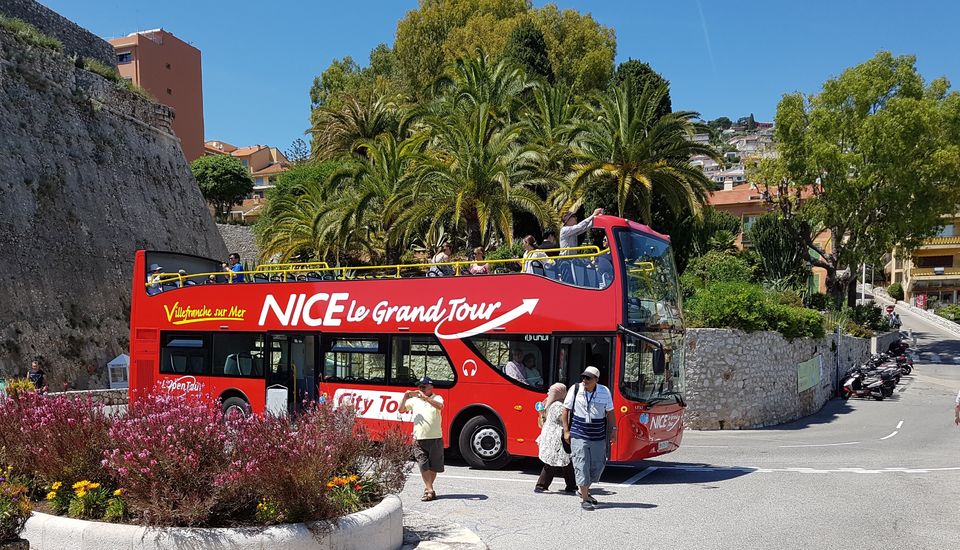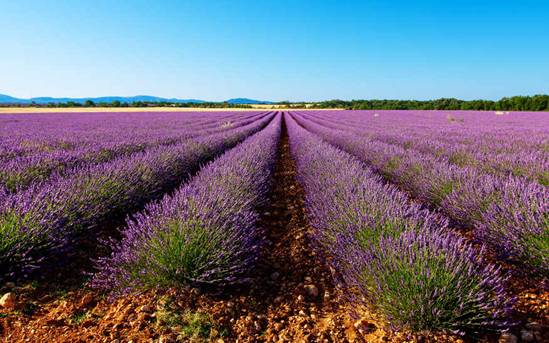A Comprehensive Travel Guide: The Ultimate Loop from Nice to Gorges du Verdon
This guide details a quintessential Provence-Alpes-Côte d'Azur road trip, taking travelers from the vibrant Mediterranean coast of Nice, through the breathtaking landscapes of the Verdon Gorge and the lavender fields of Valensole, and into the charming perched villages of inland France. This circular route, encompassing Nice, the Lac de Sainte-Croix, Moustiers-Sainte-Marie, and Valensole, offers a perfect blend of natural wonder, cultural richness, and culinary delight.
Trip Overview and Itinerary Planning
This journey is ideally experienced over a minimum of three to four days, allowing for a comfortable pace to absorb the dramatic shift in scenery from the azure coast to the rugged alpine interior. The most efficient and recommended mode of transport for this loop is by car, as public transportation between these specific points is limited and infrequent.
Recommended Duration: 3-4 days.
Best Time to Visit: Late May to early October. For lavender seekers, peak bloom is typically from late June to mid-July.
Core Route: Nice → Lac de Sainte-Croix (approx. 2.5-3 hours drive) → Moustiers-Sainte-Marie (15 mins from the lake) → Valensole (1 hour from Moustiers) → Nice (2-2.5 hours from Valensole).
Chapter 1: Nice - The Azure Gateway
Nice, the capital of the French Riviera, serves as the perfect starting point for this adventure. With its iconic pebbled beaches, vibrant old town, and stunning seaside promenade, it offers a taste of cosmopolitan Mediterranean life before heading into the Provencal hinterlands.
Attractions in Nice
Promenade des Anglais: This world-famous seafront walk is the heart of Nice. A stroll or bike ride along its length offers magnificent views of the Baie des Anges.
Vieille Ville (Old Town): A labyrinth of narrow, winding streets filled with Baroque architecture, bustling markets, and small shops. The Cours Saleya market is a must-visit for its flowers, local produce, and antiques.
Colline du Château (Castle Hill): While the castle is long gone, the park at the top provides the most panoramic views of Nice's red-tiled roofs, the promenade, and the deep blue sea.
Musée Matisse: Located in a beautiful Genoese villa in the Cimiez district, this museum houses an extensive collection of works by Henri Matisse.
Food Recommendations in Nice
Niçoise cuisine is a highlight of any visit. Key dishes to try include:
Socca: A thin, savory chickpea pancake, best enjoyed hot from a market stall.
Salade Niçoise: The authentic version includes tomatoes, hard-boiled eggs, Niçoise olives, anchovies, and olive oil, but never cooked vegetables like green beans or potatoes.
Pissaladière: A delicious onion tart topped with anchovies and olives.
Petits Farcis: Small vegetables like tomatoes, zucchini, and onions stuffed with a meat mixture.
Transportation & Accommodation in Nice
Nice Côte d'Azur Airport is a major international hub. The city itself is well-served by trams and buses. For this trip, picking up a rental car from the airport or central city is essential for the onward journey. Accommodation ranges from luxury hotels on the promenade to charming boutique hotels in the Old Town and more affordable options further inland.
Chapter 2: Lac de Sainte-Croix & Gorges du Verdon - The Turquoise Canyon
Driving northwest from Nice, the landscape transforms from coastal glamour to the dramatic pre-Alps. The final destination is the stunning Lac de Sainte-Croix, a man-made reservoir renowned for its striking turquoise color, which serves as the gateway to the Gorges du Verdon, Europe's deepest canyon.
Attractions at the Lake and Gorge
Boat Rental on Lac de Sainte-Croix: The quintessential activity. Rent an electric boat, pedal boat, or canoe from the villages of Sainte-Croix-du-Verdon, Bauduen, or Les Salles-sur-Verdon to explore the lake's expanse and enter the mouth of the gorge. Electric boats are quiet and eco-friendly, allowing for a serene experience.
Driving the Corniche Sublime: This scenic route (D71 and D955) runs along the southern rim of the canyon, offering jaw-dropping viewpoints like the Point Sublime, which provides a classic view deep into the canyon.
Driving the Route des Crêtes: A more thrilling drive on the northern rim (D23), this loop features narrow roads and spectacular lookout points, including the famous "Falaise des Cavaliers."
Hiking and Adventure Sports: The area is a paradise for hikers, with trails like the Sentier Martel offering a challenging but rewarding full-day trek through the heart of the gorge. Rock climbing, paragliding, and rafting are also popular.
Food Recommendations
The cuisine here shifts towards hearty alpine and Provencal fare. Look for riverside restaurants or village bistros serving:
Agneau de Sisteron: Tender lamb from the nearby Alpine pastures.
Trout from the Verdon River: Freshly caught and simply grilled.
Provencal Herbs and Honey: The region is famous for its lavender honey and wild herbs used in many dishes.
Picnics: Buying local bread, cheese, charcuterie, and wine for a picnic by the lake is highly recommended.
Transportation & Accommodation
A car is non-negotiable for exploring this vast area. The roads can be narrow and winding, especially on the rim routes. Accommodation options include campsites near the lake, holiday rentals in surrounding villages, and charming hotels in places like Moustiers-Sainte-Marie or Aiguines. Booking well in advance is crucial for the summer season.
Chapter 3: Moustiers-Sainte-Marie - The Ceramics Village
Just a short drive from the Lac de Sainte-Croix lies Moustiers-Sainte-Marie, one of France's most beautiful villages. Nestled at the base of a towering cliff face, it is famous for its pottery, its cascading waterfall, and the golden star hanging high above it on a chain.
Attractions in Moustiers-Sainte-Marie
The Golden Star (L'Étoile): A legendary star hung between two cliffs by a knight returning from the Crusades. A steep climb to the chapel of Notre-Dame de Beauvoir rewards visitors with close-up views of the star and breathtaking vistas of the village and surrounding valley.
Faïence Pottery Shops: The village is renowned for its handmade faïence (tin-glazed pottery). Visitors can browse dozens of workshops and boutiques selling everything from traditional decorative plates to modern ceramic art.
The Waterfall: A stream runs directly through the center of the village, cascading down a series of waterfalls that add to its enchanting atmosphere.
The Parish Church: A Romanesque church built into the rock, dating from the 12th and 13th centuries.
Food & Cultural Insights
The village offers several excellent restaurants with terraces overlooking the stream. The culture is deeply intertwined with its artisan history. Engaging with local ceramicists provides insight into a craft that has been passed down through generations. The village is quieter in the evenings after day-trippers have left, offering a more intimate experience.
Chapter 4: Valensole Plateau - The Lavender Sea
Driving south from Moustiers towards Nice, the route traverses the iconic Valensole Plateau. This vast agricultural plain is one of the most important lavender-growing regions in Provence. A visit during the summer bloom is an unforgettable sensory experience of vibrant purple fields and fragrant air.
Attractions on the Valensole Plateau
The Lavender Fields: The primary attraction. The fields are at their most spectacular from late June to mid-July. The area around the D6 and D8 roads is particularly dense with photogenic fields. Visitors are encouraged to be respectful—walk between rows without damaging plants.
Lavender Distilleries: Several farms offer tours to see how lavender essential oil is extracted. This is a great opportunity to purchase authentic, high-quality products directly from the producers.
Sunflower Fields: In July and August, vast seas of sunflowers complement the purple lavender, creating a stunning color contrast.
Picturesque Villages: Stop in the small town of Valensole itself for a coffee or explore nearby villages like Riez, which boasts Roman ruins.
Food Recommendations
The plateau's products are central to its cuisine:
Lavender Honey: A unique and delicious local specialty.
Lavender Ice Cream: A surprisingly refreshing and floral treat.
Lamb raised on the plateau.
AOC Olive Oil from Haute-Provence.
Cultural Insights & Photography Tips
The lavender harvest is a vital part of the local economy and culture. The best light for photography is during the golden hours—early morning or late evening—when the light is soft and the shadows are long. Be aware that bees are abundant in the fields; they are generally docile if not disturbed.
The Return Journey to Nice
The drive from Valensole back to Nice takes approximately two to two and a half hours, descending from the lavender-scented plateau back to the glittering Mediterranean coast. The autoroute (A8) provides a fast route, but smaller departmental roads offer more scenic drives through vineyards and olive groves.
Practical Travel Summary
Car Rental: Essential. Book months in advance for summer. Be prepared for tolls on the A8 motorway.
Accommodation Strategy: Consider basing yourself in Moustiers-Sainte-Marie or a village near Lac de Sainte-Croix for 2-3 nights to explore the gorge and plateau without changing hotels.
Packing List: Comfortable walking shoes, swimwear, sunscreen, hat, reusable water bottle, camera, and a light jacket for cooler mountain evenings.
Language: While English is spoken in tourist areas, learning a few basic French phrases (Bonjour, Merci, S'il vous plaît) is greatly appreciated.
Budgeting: Costs can be high in peak season. Save money by picnicking for lunch and dining at more affordable restaurants for dinner. Museum passes and advance bookings for activities can also help manage costs.
This loop from Nice through the heart of Provence encapsulates the incredible diversity of southeastern France. It’s a journey that engages all the senses—from the taste of socca in a Niçoise market to the sight of endless lavender fields, the scent of pine forests in the gorge, the sound of silence on Lac de Sainte-Croix, and the touch of hand-crafted ceramics in Moustiers. It is a trip that leaves a lasting impression of natural beauty and artisanal tradition.



